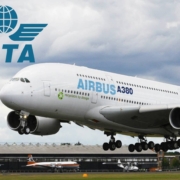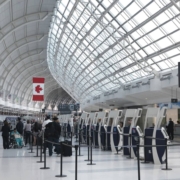How is the security at airports?
Airports are one of the most regulated places in terms of security systems, but how do they manage to control the high amount of luggage and hundreds of travelers at the same time? In this article we will review how the different types of airport screening work and some of their most common practices to make their facilities a safe place for their customers and workers.
Concerning passengers, the first checkpoint they must go through is the one before entering the restricted area where they must check their boarding pass. Either employing a scanner that reads the code printed on their boarding pass or directly on their cell phone. It is expected that soon this control will be carried out using biometrics with facial recognition systems, as is already being done in many airports as a test.
After entering the restricted area, passengers must go through a second checkpoint, where their hand luggage will be checked by a second scanner. At this point, the objective is to check that no passenger or employee can access the terminals with prohibited or potentially dangerous objects. For them, passengers must introduce their hand luggage, shoes, and other belongings, and using X-rays will be able to detect any restricted object.
This type of scanner at this checkpoint manages to greatly streamline the transit and entry to the facilities since this control should be done manually and individualized.
But what about checked baggage? While passengers enter the terminal, the bags they have previously checked-in are also subjected to several security controls. Once they are received by the airline, the bags pass through the “cheeks yard”, which is nothing more than conveyor belts that take the luggage through 5 different types of control and allow them to avoid dangerous situations such as explosions or fires.
Once they have entered the terminal, the controls do not stop, passengers must pass through one or another checkpoint where their data is verified, especially before entering the aircraft. For this reason, airport security personnel play a fundamental role in risk detection and are a key part of the whole security system in the airport. They require very specific training and constant renewal, especially because this area is constantly renewing its technologies and, today they can rely on multiple devices for early detection of risks.
For this reason, GP Nauticals has developed a software called Pax AIMS that allows airports to keep track, control, and audit all passengers entering the airport facilities, deploying fixed or mobile checkpoints and allowing concessionaires to validate boarding lists.
If you are interested in learning more about the company or any of its AIMS Suite products, you can visit its website https://gpnauticals.com/ or contact any of its consultants.










Leave a Reply
Want to join the discussion?Feel free to contribute!